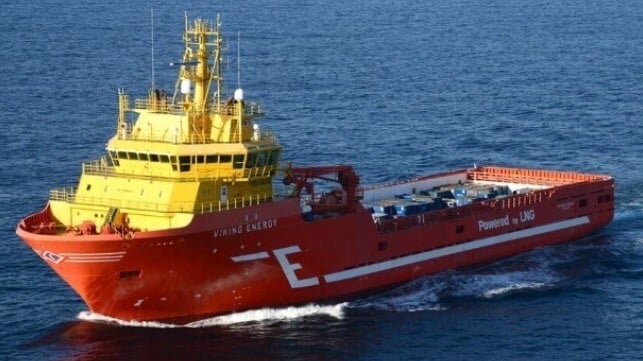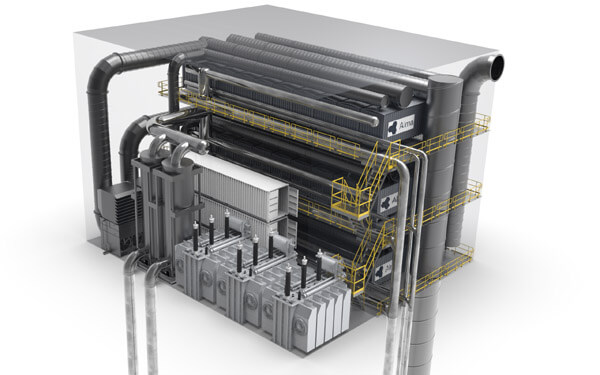Alma Clean Power Makes Zero Emission Deep Sea Shipping a Reality

Deep sea shipping accounts for close to 90 percent of the global fleet and thus has a significant impact on global warming. Until now, a real zero emission solution for this segment has not been available; batteries don’t last long enough with a size that can fit onboard a ship. PEM (Proton-exchange membrane) fuel cells can achieve zero emissions limited to hydrogen, but this is not easily available along the coastlines. It is also difficult to store hydrogen in the quantities needed for long voyages.
Alma Clean Power, based in Bergen, Norway, is introducing high-temperature Solid Oxide Fuel cells (SOFC) as a solution to the decarbonization challenges in deep-sea shipping. The fuel cells can operate on a variety of fuels so that bunkering will not be an issue in most areas of the world. In addition to zero emissions, sensational efficiency levels can be achieved, translating into great savings for ship owners both in terms of fuel costs and CO2 taxation.
A great concern for many ship owners is to decide which fuel to choose in order to avoid excessive OPEX and the risk of stranded assets in the future. Multifuel options are often preferred, but most of today’s multifuel solutions need fossil fuels as pilot fuels, making zero emissions unviable. The Alma fuel cell can operate on a variety of fuels such as LNG, ammonia, methanol, syngas, LOHC, and hydrogen with low or zero emissions.
The SOFCs system comes in modules producing 0,5 - 2 MW per unit pending on project need. The modularized, compact and scalable design makes the fuel cells suitable for any type of vessel or offshore installation. And the technology doesn’t have any of the limitations related to existing power solutions:
-
It can switch seamlessly between conventional and synthetic fuels
-
The design is scalable with capacities of up to 300 MW and beyond
-
It delivers an electrical efficiency beyond 60% + heat recovery
-
It operates silently with no vibrations
-
There are no emission slips

“Our philosophy is that the shipowners shall simply choose the engine, and not worry about the fuel type. Our fuel cell engine can handle almost any type of fuel, there will always be one that is economically and geographically accessible,” says Torleif Stokke, Chief Commercial Officer of Alma Clean Power.
The company proposes an operational strategy that accounts for the current uncertainties related to fuel availability and prices, in particular for green fuels such as hydrogen and ammonia.
“Until we have the necessary infrastructure and electricity supply in place to produce green fuels, we must make the best out of the cleanest fossil fuel which is natural gas,” continues Torleif Stokke.
The impressive efficiency levels of the Alma fuel cell automatically reduces emissions as less fuel is consumed for the same route. On the other hand, the low fuel consumption will have a significant positive impact on CO2 taxes. If a carbon capture system is in place, the CO2 from the Alma fuel cell is emitted in a concentrated form where most of the emissions are CO2. Such a system makes CO2 capture much easier and more efficient.
“Annual fuel cost savings for a typical cargo vessel will be significant compared to operation on conventional ICEs, and the saved CO2 taxes come on top of this, making a significant positive impact on the company’s bottom line,” continues Torleif.
Huge possibilities for cost and emission reductions offshore

Alma has also proposed to replace inefficient gas turbines offshore with the SOFCs, as an alternative to the ongoing electricity cabling to land in Norway. This has the potential of reducing up to 90% of emissions from the oil and gas sector when carbon capture is included. Many platforms already have injection systems available, making CO2 storage relatively easy to implement. The cost benefit with an increased efficiency from 20-35 percent to >60 percent is immense, and the level of reduced emissions and CO2 taxes is proportional.
The technology has been developed through more than 30 years of research and development. The company has several pilot projects ongoing with a series of partners for the implementation of LNG and ammonia-operated fuel cells on commercial vessels, being supported by EU Horizon 2020, Enova, and Innovation Norway. Alma’s fuel cells will be commercially available from 2026.
To learn more about Alma’s solutions, the company will be at the Maritime Cleantech booth at hall B7 på stand 102 during SMM. Alma Clean Power will hold a presentation at 12:00 on Tuesday, September 6.
Top photo: ShipFC – Green Ammonia Energy System onboard Viking Energy

that matters most
Get the latest maritime news delivered to your inbox daily.
This article is sponsored by Alma Clean Power. For more information, visit the company online.
The opinions expressed herein are the author's and not necessarily those of The Maritime Executive.
